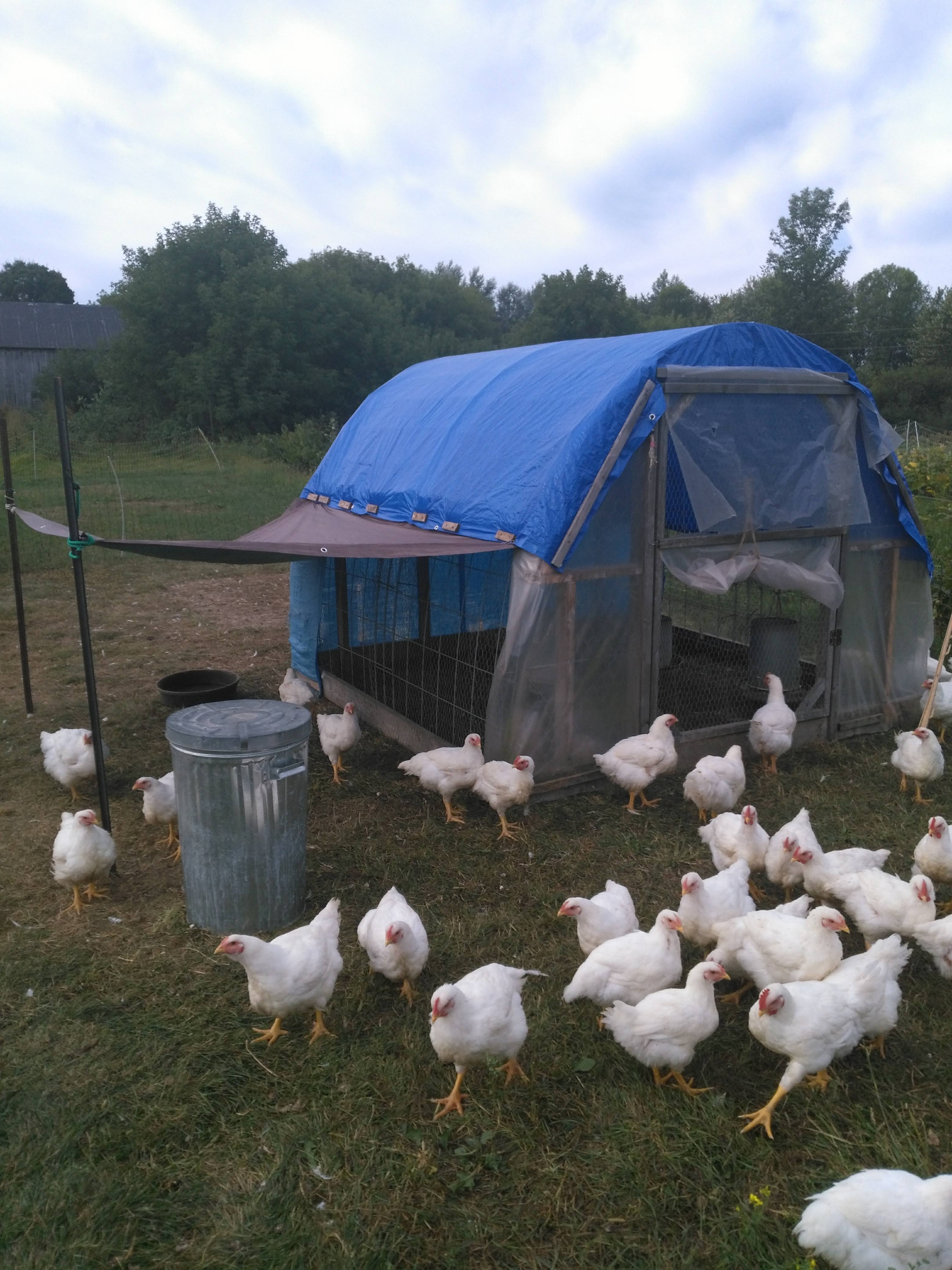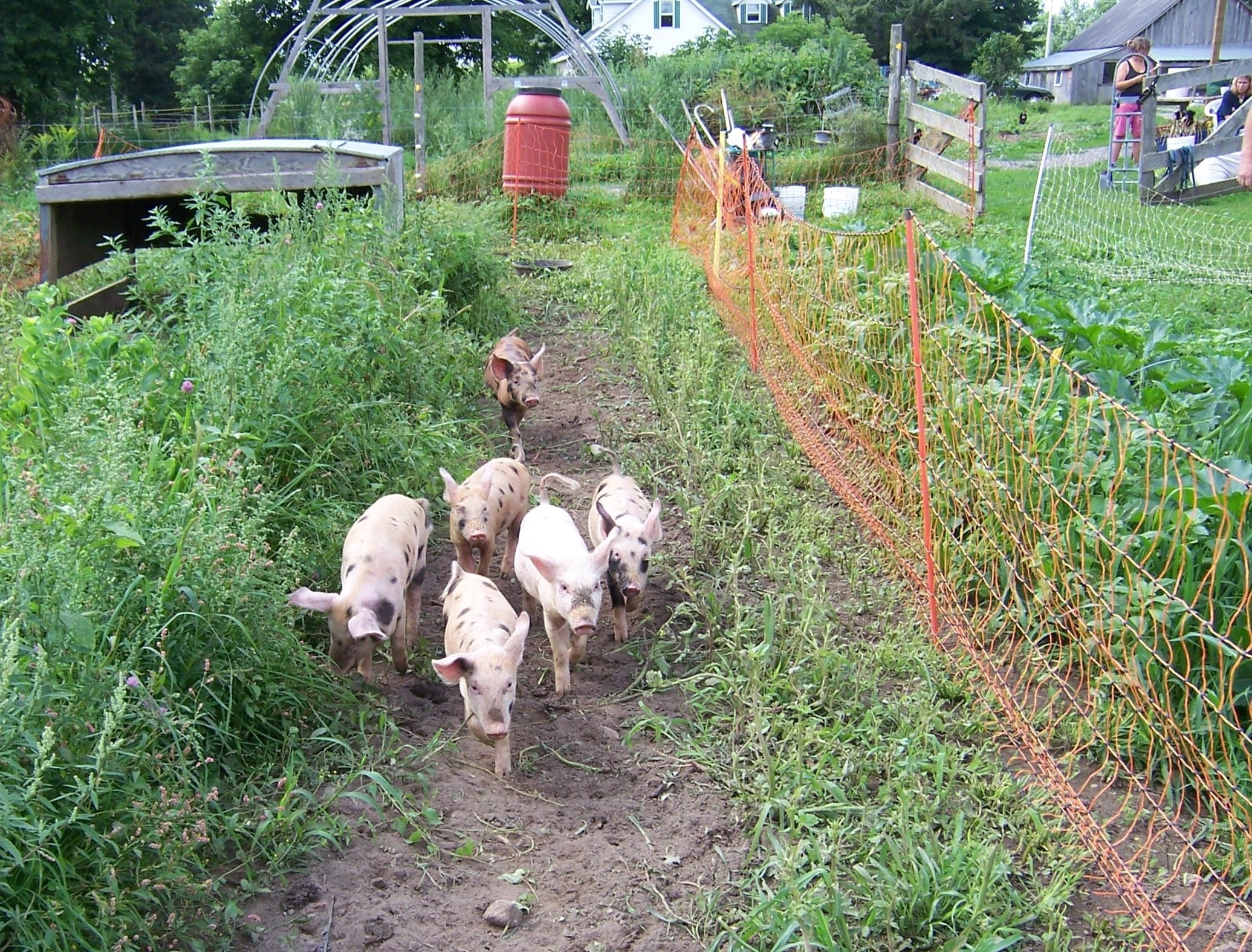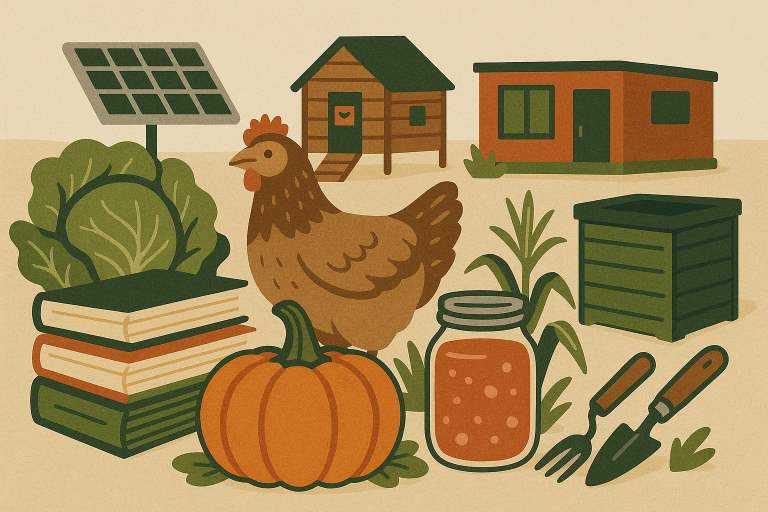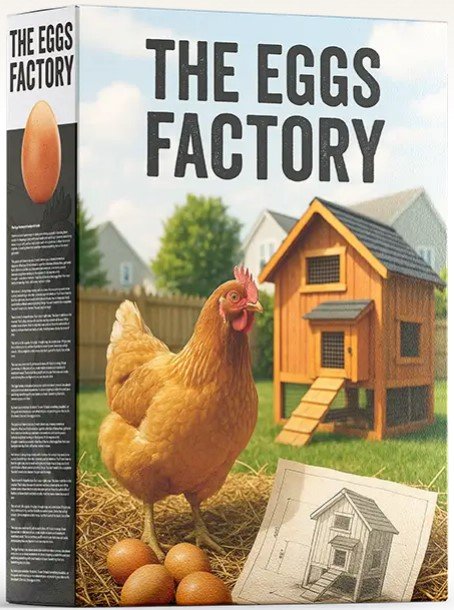Turning Your Small Property Into A Big Opportunity by Starting A Micro Farm
 Is this what you picture in your future?
Is this what you picture in your future?When the world feels less certain, there can be some comfort in knowing you can provide for yourself, and maybe even make some money doing it. If you’ve got a small plot of land, or you’re dreaming about buying one, starting a micro farm could be the next logical step toward greater self-sufficiency and an additional income stream.
Interest in micro farming is growing fast. This page will give you an idea of what you’ll need to get started, how to set yourself up for success, and what challenges you face along the way.
Let's start with WHY you want to start a micro farm.
Key Question: WHY Start a Micro Farm?
Starting a micro farm is a serious commitment of your time and energy. Start by getting clear on what you expect a micro farm to give you. This might include:
Self-Reliance in Uncertain Times
Between inflation, food shortages, and supply chain surprises, many people are looking to regain control over their food supply. A
micro farm can produce something tangible and valuable, for your own
kitchen or your local community.
Side Income Potential
A micro farm is NOT a “hobby farm.” Done right, micro farms can bring in
thousands or tens of thousands of dollars a year. High-value crops, niche livestock, and
community-supported agriculture (CSA) shares all add up. Your micro farm has the potential to be a real work-from-home side hustle
Flexibility and Scalability
You don't need 50 acres and a full-time staff. A micro farm can be as small as
a backyard or a couple of rural acres. Start with what you have and grow as
you learn and earn.
Connection to the Land and Your Community
Selling locally means you’ll build relationships with customers who care about
where their food comes from. If your experience is like mine, you’ll also feel a powerful connection to
the seasons, the soil, and a slower, saner pace of life.
In other words, you need to get a handle on 'WHY' you want to farm before you tackle the 'WHAT' and 'HOW'. Even Google Maps knows you need a destination before you set out on your journey. Your destination in this case is the goals you have for your farm.
Next, let's put some parameters around that term 'Micro Farm'. The answers and implications are key to understanding the 'what' and 'how' of your micro farm.
Define our Terms: What is 'Micro Farming'?
Carefully Curated Resources For The Homesteader and Prudent Property Owner
The world seems to be a little unsettled these days. I'm always looking for ways to make New Terra Farm more self-sufficient and productive.
Here's a few of the best ways I've found to make self-sufficiency happen. Useful Homesteader Resources
A micro farm focuses on efficient, high-value farming in a small footprint, maybe 3-5 acres or even less.
To compensate for a small size, micro farms stack revenue streams creatively.
I've coined the acronym MICRO to describe this: Many Integrated Crops Raised Organically.
There are a couple key things to understand here:
1 - if you are expecting to generate revenue from your micro farm, then you need to adopt a business owner mindset from the beginning;
2 - The first thing a business owner should consider is 'who will buy my products'?
Here's a section from my book Backyard Garden Profits:
You can do anything, but you can’t do everything, and everybody can’t be your customer. Your goals determine your focus and your results. Your plan is how you close the gap between where you are and where you want to be.
Here’s an overview of the questions you need answers to:
- What do you expect to sell to your customers? What will you provide them that will delight them and make them eager for more?
- How much income do you want – or need- to make from your micro farm?
- And how do you put all those expectations into a plan?
No matter what you plan to sell, answering these questions is the first, extremely-critical step in making your micro farm dream a reality. Figure this out before you spend time and money on infrastructure, equipment or livestock.
Example Micro Farm Ventures
 Raising meat chickens on pasture is a quick turnaround micro farm business
Raising meat chickens on pasture is a quick turnaround micro farm businessTypical micro farm ventures include:
- Market gardens
(intensive vegetable growing). Can be started on a small plot of land; my first market garden was about 1/5 of an acre. Relatively low start-up costs if you you are a good 'scrounger'. Demand for fresh, healthy, local produce increases every year, so you should be able to find a willing market.
- Small livestock (chickens, rabbits, or pigs). Quick turnaround, from a few weeks for chickens to a few months for pigs. Pasture-raised pork and chicken are premium products, we've always been able to sell all we could raise.
- Herb and flower farming (edible, medicinal, ornamental) You can grow a lot of herbs and flowers in a small space, intensive planting can make this a very profitable enterprise.
- Value-added goods (jams, herbal teas, skincare, etc.) The farmers market I launched in Merrickville featured one vendor who sold only jams, preserves and homemade pies. She had been doing this for many years and had steady sales at her booth.
There are many other options of course, but these examples offer relatively low cost of entry, and a quick return on your investment. Which you start with depends on the infrastructure and assets you have available, and of course RULE 1: Grow what you know you can sell.
Start with one and add crops as your experience grows.
 WE kept our pigs next to our garden so they could help clean up garden waste
WE kept our pigs next to our garden so they could help clean up garden wasteStarting a Micro Farm In Four Simple Steps
Following on from that 'business mindset' idea I mentioned at the beginning, here's the sequence you need to follow for starting a micro farm on a sustainable and profitable basis:
Step 1: Focus: Set practical goals for sales, decide what crops to grow, and find the customers who will buy your garden goodies;
Step 2: Preparation: Plan your start-up budget, layout your farm for efficiency and productivity, and create your growing plan to keep the harvest coming;
Step 3: Execution: Plan how to work efficiently in your farm using advanced tools and techniques designed for the small grower, and how to protect your crops from pests and predators.
Step 4: Review: Track your results, and evaluate and adjust your plans for continuous improvement.
If you follow this sequence you have a good shot at building a successful micro farm for the long haul. If you’re ready to literally get your hands dirty, and bring your brains and motivation to the task, micro farming could be one of the most fulfilling things you ever take on.
Other Links of Interest for the Micro Farmer
We're downsizing to a smaller footprint. Our choice might be right for you too. Suzie and I are both in our mid-60's. The plan (soon) is to build a second smaller residence on the farm and turn the main house over to the kids. We've looked at a number of options to build, including quonset home kits and tiny homes. The leading contender so far is a container home. If you are looking to build a second (or a first) residence on your property, I recommend you take a look at Shipping Container Home Made Easy. It's the best instructional set I've found to build your home cheaply and safely.
Here's my curated list of micro-farm equipment for the small grower
Diversify, but do it smart. Read this before you start. Farm Side hustles that work in the real world
You might also want to up your farming game with my Bootstrap Book series. Practical, actionable guidance to grow more, sell more, and make your farm more sustainable.
And because there is more to survival than just food, here's a resource with literally HUNDREDS of great tips and low-cost projects for your homestead. The Self Sufficient Backyard. Highly recommended.
Farm-Fresh Eggs - Acreage Not Required!
One of my joys at New Terra Farm is going out to my chicken coop every day to collect fresh, organic eggs. If you’ve ever found yourself questioning the rising cost and declining quality of store-bought eggs, you’re not alone; and there’s a practical solution, even if you don't own a farm.
I didn't write this one but it's a great resource anyway. If you can find 50 sq. ft. on your property this is a straightforward, hands-on guide for setting up a compact backyard chicken coop that can supply your household with a consistent flow of fresh, nutrient-rich eggs.
It’s designed for people who value food security, self-sufficiency, and a healthier lifestyle, even if they have no prior experience with raising chickens.
This system walks you through building a durable coop using common, affordable materials—typically for under $100. It’s low maintenance, fits in a small space (around 50 sq ft), and requires only a few minutes of attention each day. The guide includes detailed plans and practical tips for everything from predator-proofing to choosing quiet, productive breeds. If you’re looking to reclaim control over your food source, reduce grocery bills, or even create a modest income by selling excess eggs, The Eggs Factory offers a practical, community-tested solution to get started.
See Something You Like? Share!
Comment or Question About This Topic?
Got something to say or story to tell about this? Share it!


